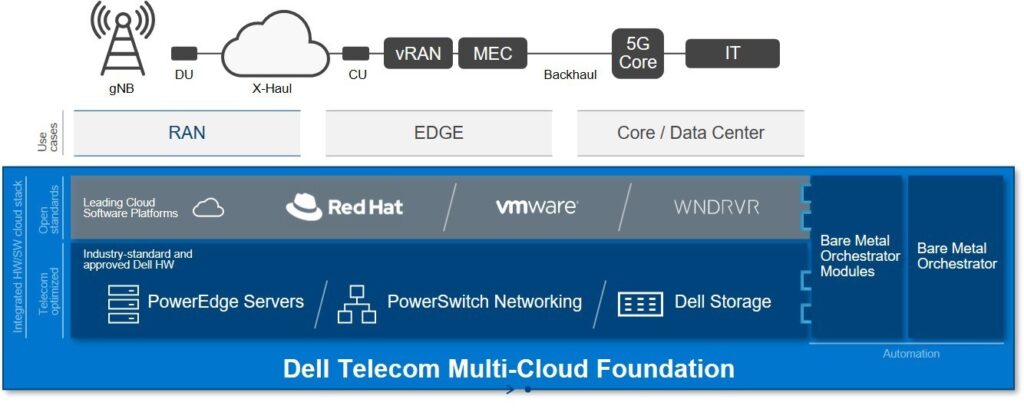Network automation helps cloud architectures – including 5G – work at scale
5G Standalone (SA) deployments utilize a core network design aligned with cloud architecture. This enables 5G networks to deploy new services at scale and speed which before now has been the domain of hyperscalers. Driving all of this innovation forward is a need for extensive network automation at every level of the operation.
The function of distributed cloud networks, the near edge and the far edge — all of it depends on applying the zero-touch network principles which govern how cloud computing services can scale, abstracted from the operating systems or mundane operational capabilities of the devices they’re running on.
The use of network automation at scale demands more than just a technological solution. Automation demands an essential cultural shift in network operations functionality – an adoption of the DevOps culture which is so essential to hyperscaler and cloud developer success.
Matt Beal, senior vice president of software development for Oracle Communications, sees network automation as both a challenge and opportunity for CSPs in the 5G era.
“Changes in network deployment, optimization, and monitoring will be significant in 5G as opposed to 4G. This is being driven and enabled by the cloud native architecture of 5G. Cloud native architectures are operated at scale using more data- and insights-driven techniques fed by machine-learning algorithms. It is also enabling service providers to leverage open-source monitoring toolkits,” he said.
“This change is naturally taking place over time because carriers manage their networks as multigenerational networks. However, more advanced carriers will implement cloud native operating models and extend them to their 4G estates, especially where the 4G network embraces cloud native technologies both at the core and in the RAN,” said Beal.
Network automation requires a DevOps mindset – Oracle
Beal thinks CSPs that will see the biggest success with 5G are the ones who go cloud-native.
“Software-ization and cloud-ification of network elements requires a massive shift in the mindset and capabilities of the operator,” he said. “Disciplines like data management, infrastructure automation and software lifecycle management must be adopted wholesale from cloud service providers. Carriers that seek to reinvent these disciplines or invent them from scratch can often ignore too many hard-won best practices.”
Making it work: Telco multi-cloud, virtualization and disaggregated networks
Against the backdrop of needing to automate and “cloudify” everything, Dell Technologies has rapidly grown its Telecom Systems Business and ahead of Mobile World Congress Barcelona told a cohesive product and partner story that denotes significant progress for the firm as it looks to help operators integrate the systems and services underpinning the 5G vision.
Dell’s VP of Telecom and Edge Solutions Marketing Aaron Chaisson, speaking in a briefing with media and analysts, gave some background on the company’s goal in regard to enhanced services to create a common infrastructure foundation and serve a central role in linking software developers with carriers.
“As the telecommunications industry is disaggregating and modernizing and moving into the next era of that industry, Dell Technologies was really looking to get into the game with our leadership over decades of working with open platforms and core IT and taking those people, those processes, and those technologies and being able to help the telecommunications industry modernize their infrastructure,” he said.
The focus last year, Chaisson continued, was on developing reference architectures with support for VMware, Red Hat and Wind River on Dell infrastructure, and launching the Open Telecom Ecosystem Lab (OTEL) for product and services collaboration. From there, Dell worked with partners on validating designs for core, edge and RAN use cases. And in October, Dell announced the Bare Metal Orchestrator (BMO) software package for automating the provisioning and lifecycle management of open network infrastructure.
Now for the next step: “Pulling this all together,” Chaisson said.
Unified infrastructure and cloud software management
Dell’s Telecom Multi-Cloud Foundation combines Dell’s hardware and BMO infrastructure management software. Operators using this hardware/software combo can select a BMO module to deploy and manage cloud software stacks from Red Hat, VMware or Wind River.

According to a paper from Peter Fetterolf of ACG Research, operators can realize an almost 40% opex reduction by using the Telecom Multi-Cloud Foundation. ACG projects a 211% return on investment over five years. Savings are derived from simplified test and certification, reduced need for support, faster configuration error recognition and remediation, faster infrastructure provisioning, and across the board process simplification and automation.
Fetterolf concluded that for 5G to deliver on its promises, CSPs need to modernize and virtualize while navigating the challenges of operating centralized and distributed data centers. starting with network automation.
“One of the key problems is the lifecycle management of the cloud stack and the bare metal layer. Effective engineering, management, and operations of thousands of edge data centers and hundreds of thousands of servers will require orchestration and automation of both the bare metal layer and the telco cloud stack,” he said.
Telecom Systems Business Vice President of Product Management Andrew Vaz described the BMO modules as use case-specific blueprints “that allow BMO as an engine to go program that underlying infrastructure. Once you do this, you now have a workload-ready infrastructure…Take the guesswork out, take the human error out of this, and you have the flexibility to deploy your workloads how you want.”
To summarize, network automation demands changes inside the telco cloud and inside the operational mindset of network operators. But network automation is also the essential elemental force that drives cloud innovation forward.
For more about 5G and telco cloud, download this free report.
The post How does network automation help 5G? appeared first on RCR Wireless News.
